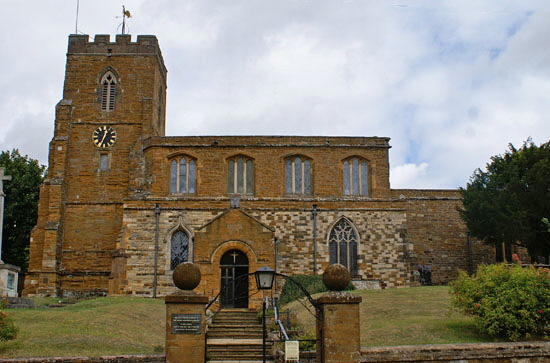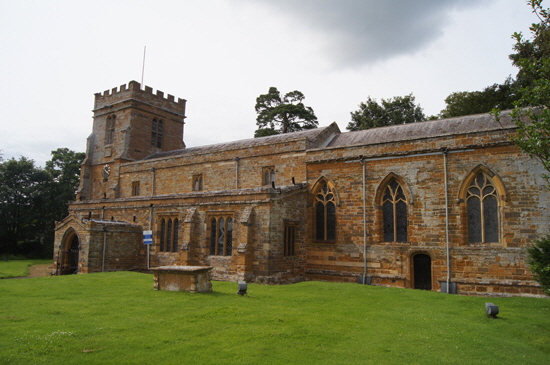|
Alphabetical List |
|
|
|
|
|
|
|
County List and Topics |
|
|
|
Please sign my Guestbook and leave feedback |
|
East and West Haddon lie just four miles apart north west of Northampton. In truth, they are both pleasant enough churches, all Northamptonshire ironstone, but are unlikely to set many pulses racing. But what they do each have is a Norman font. And those Norman fonts are totally different in nature. West Haddon’s is definitely the more interesting. It is square and on each face it has a scene from Christ’s life. It is not beautifully carved, but nor is it child-like and I would suggest that he mason was no slouch with his axe. East’s is circular and its designs are much more abstract and, yes, primitive. Whereas West Haddon’s font is a celebration of Christianity, East Haddon’s is mysterious and obscure. One of the joys of Norman fonts is this very unpredictability. So for the church crawler here are two Norman fonts, each in their own way well worth viewing, and within four miles of each other. Sure, the rest of the buildings are uninspiring - although not unattractive - but these two are definitely worth an hour of your time. And - get this - only three miles west of West Haddon is Crick. This has yet another - one might say unique - style of Norman font. And it has fabulous - I mean that literally - aisle capitals as well. So you can fill your boots in this part of Northants. What are you waiting for? |
|
|
||||||||||||||||||||||||||||
|
East Face: Christ in Glory with an angle on his right and the eagle of St John to his left. |
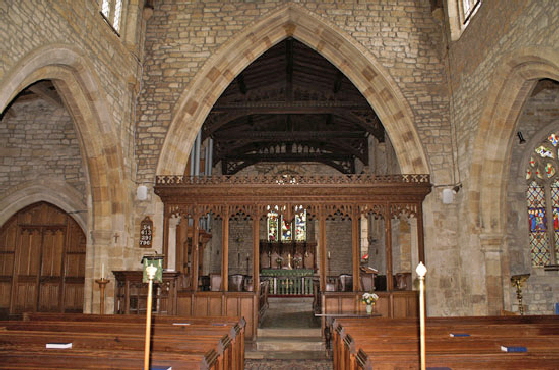 |
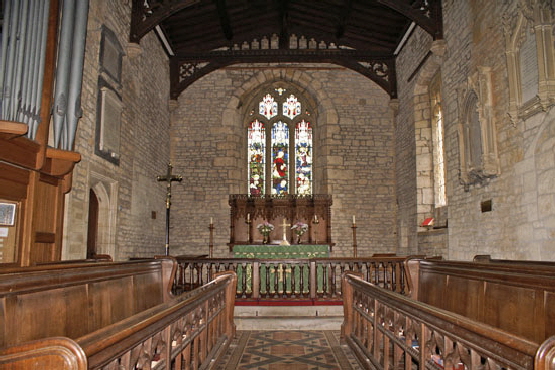 |
|||||||
|
Left: The view to the east end. The screen is modern. Right: The chancel. Despite the small east window this is still an airy space. |
||||||||
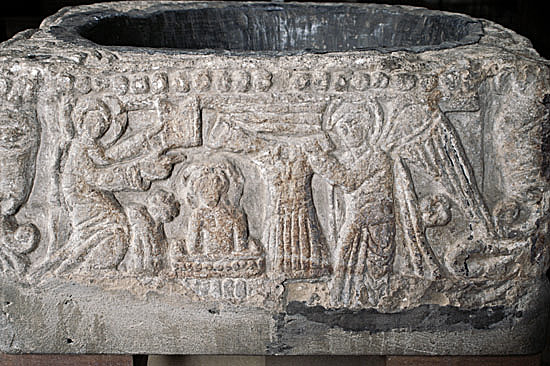 |
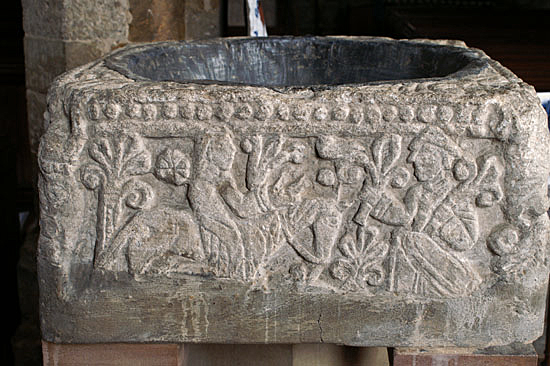 |
|||||||
|
Left: The baptism scene. There is an angel to the right. On the left a man - John the Baptist? - holds a book and points towards it. Christ is in a font! Right: The Palm Sunday scene. Christ on the left is astride his donkey. To the right a man strews rather dubious-looking palms in his path. |
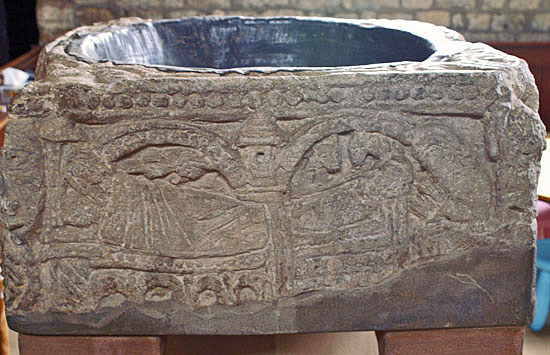 |
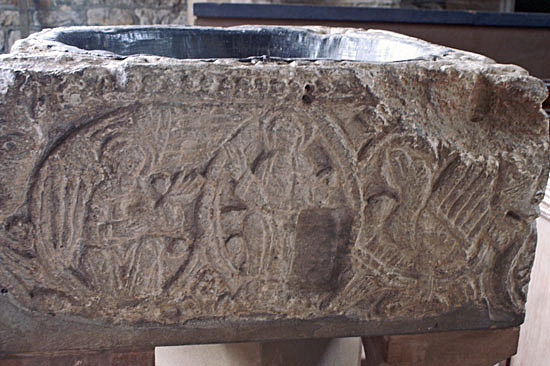 |
|
Left: The Nativity scene. Mary’s head is at the left, lying on a “bed”. At the foot of the bed (right) is a Magus praying. Asses heads can be seen to the left of the King. Above Mary’s torso is the Hand of God pointing towards her face. Oddly, I can’t see the baby Jesus in this scene! Right: Christ in Majesty. On the left is an angel; on the right is the eagle figure of St John. |
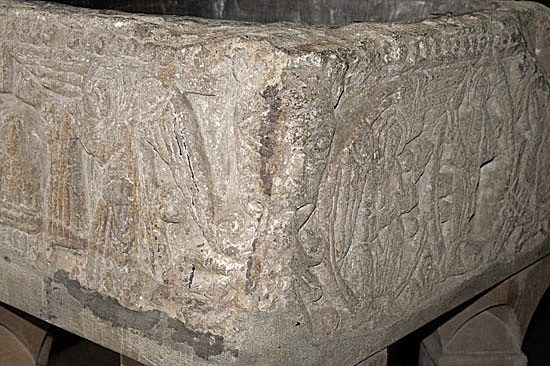 |
|||
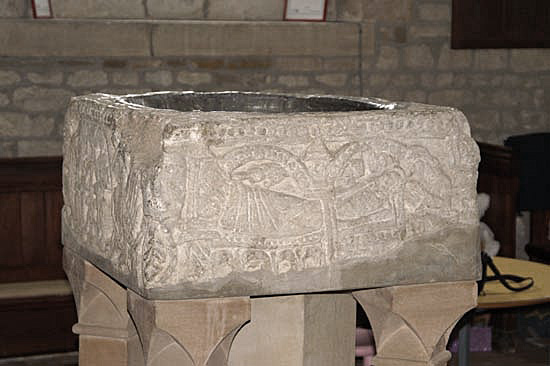 |
|||
|
Left: As can be seen in this picture, each of the four corners has a grotesque. Right: The South East corner. Note the large eyes and ears and what might be foliage emitting from the mouth. |
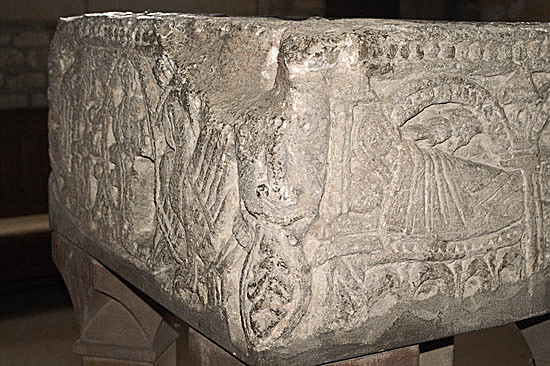 |
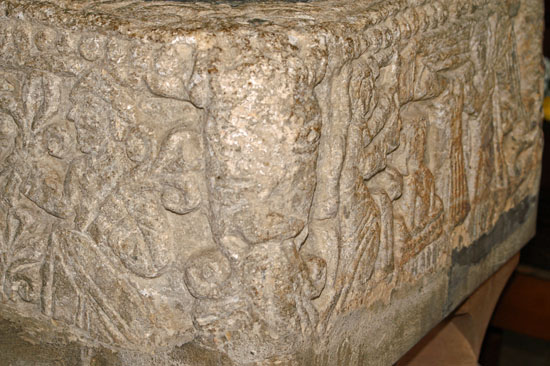 |
|
Left: The North East corner. There has been some damage here. Again, it could be either a leaf or a tongue emitting from the mouth. Right: The South West corner. |
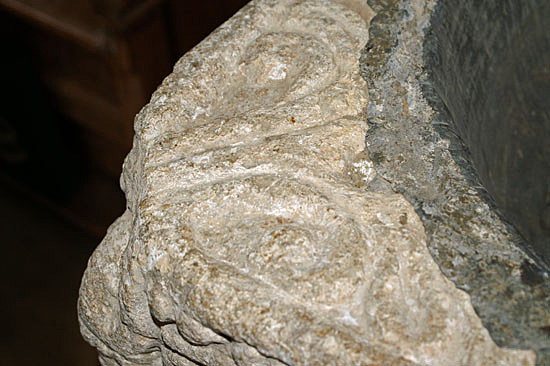 |
|||
|
This picture shows the rim of the bowl. Being square, the font has spaces between its corners and the circular lead bowl. At West Haddon this has been filled with a foliage decoration. |
|||
|
East Haddon |
|||
|
|
||||||||||||||||
|
serpents” which we might more usually describe as wyverns - a two legged dragons. Dragons were often - but not invariably - seen as a source of evil so we might have here an image of Christ asserting his dominion. |
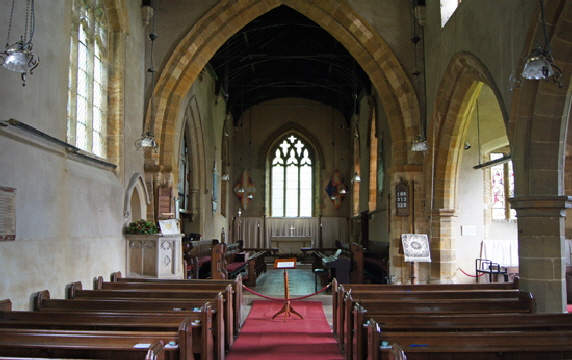 |
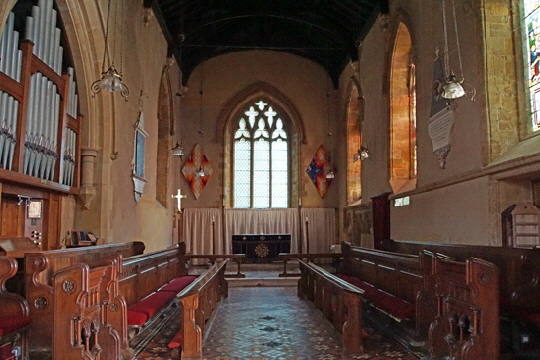 |
|
Left: Looking east towards the chancel. Note the ineffectual rope and “keep out” notice! Right: Looking into that “must be protected at all costs” chancel. It’s all very odd. |
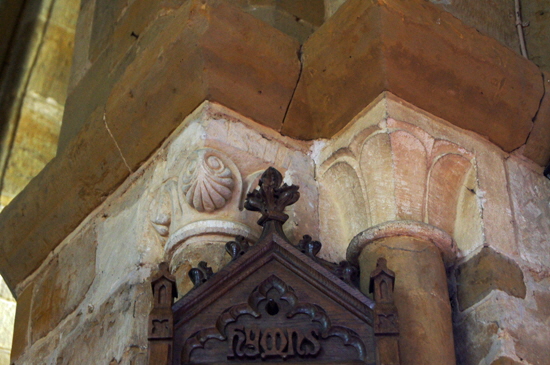 |
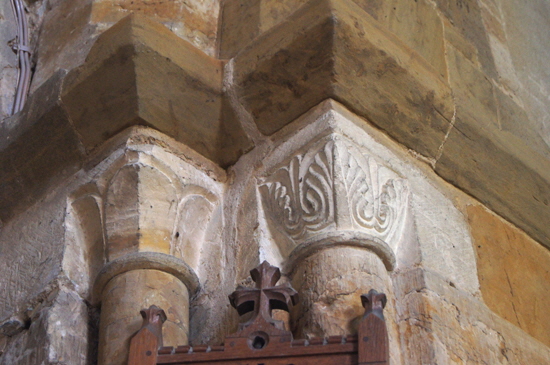 |
||||||||||||||||||||||
|
The Norman chancel arch capitals which probably date towards the end of the period. |
|||||||||||||||||||||||
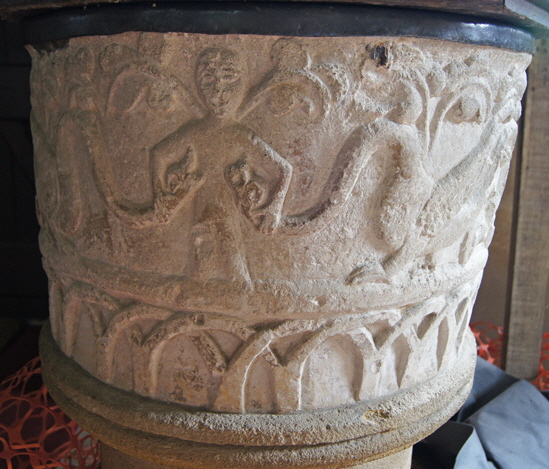 |
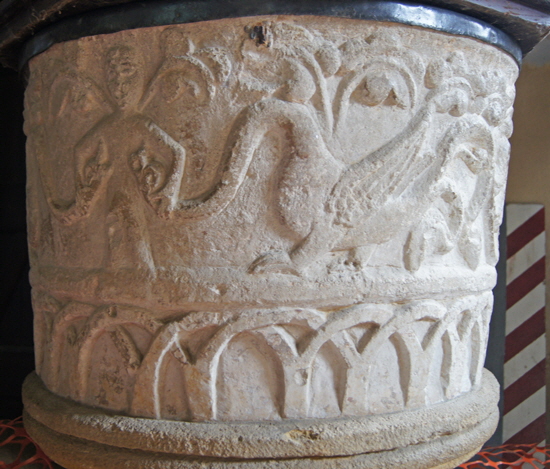 |
||||||||||||||||||||||
|
Left: The The figure of Christ - probably - clutching a griffon - possibly - under each arm. Norman style arcading has been rather crudely carved around the base. Right: The right creature. The wings, it must be said, are remarkably un-dragon like just as their heads are remarkably un-ferocious. They look more like geese. |
|||||||||||||||||||||||
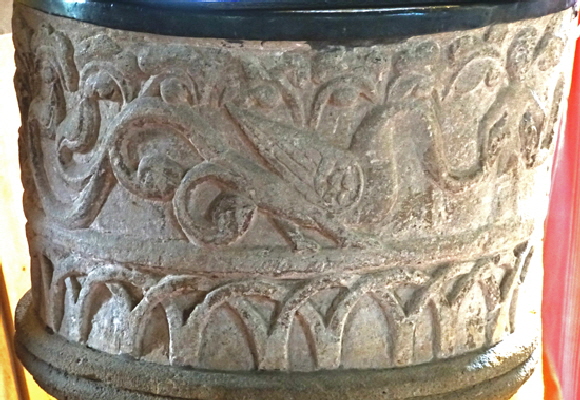 |
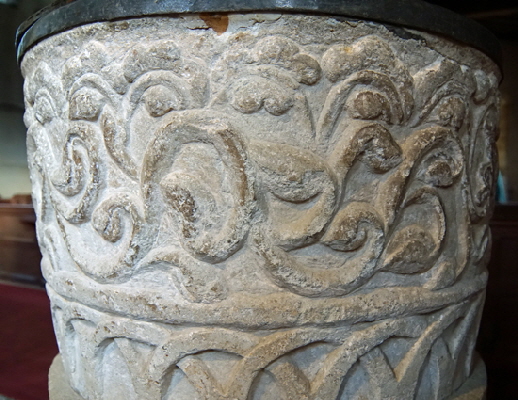 |
||||||||||||||||||||||
|
Left: The putative dragon to the left of the figure. Right: The foliage and tendrils around the rear of the font. |
|||||||||||||||||||||||
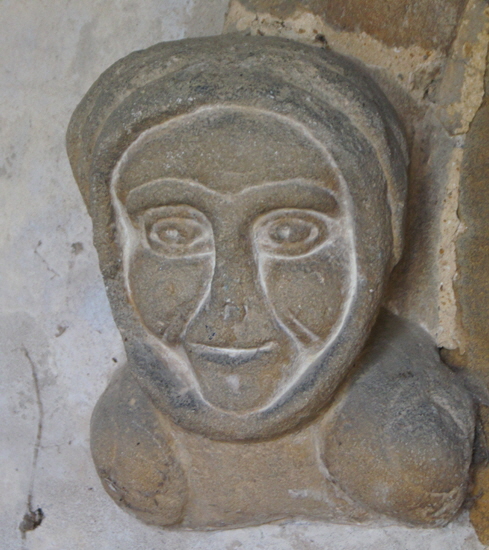 |
|||||||||||||||||||||||
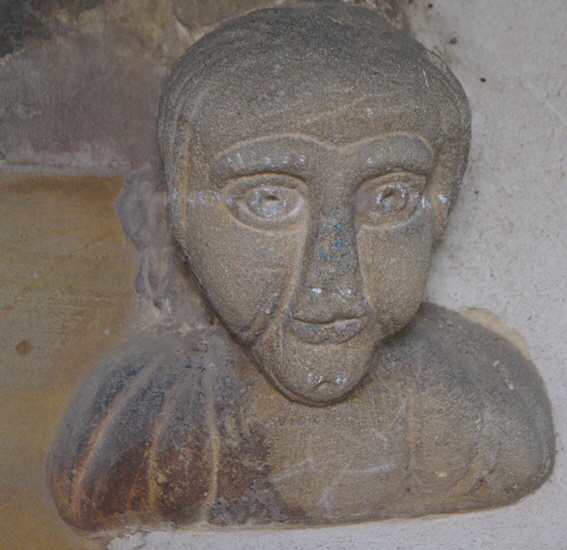 |
|||||||||||||||||||||||
|
A couple of nice interior door label stops |
|||||||||||||||||||||||
 |
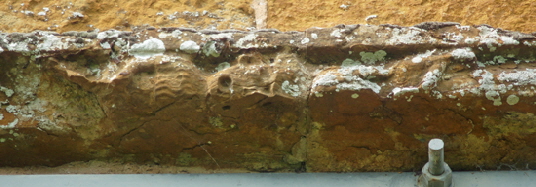 |
||||||||||||||||||||||
|
Two fragments of what must have been an interesting frieze, Despite its name, Northamptonshire ironstone is very susceptible to weathering. Left: What was a reclining figure flanked by a ballflower - that icon of the Decorated style. Right: I think we had some creatures here but they have been obliterated, sadly. |
|||||||||||||||||||||||
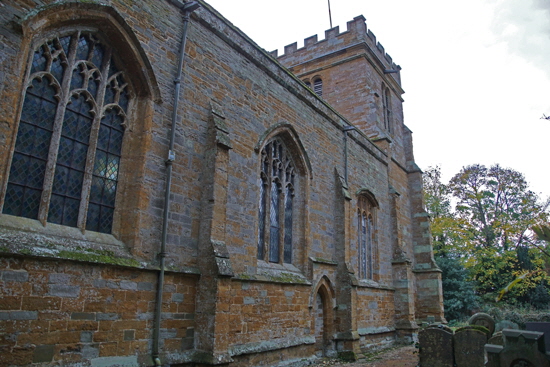 |
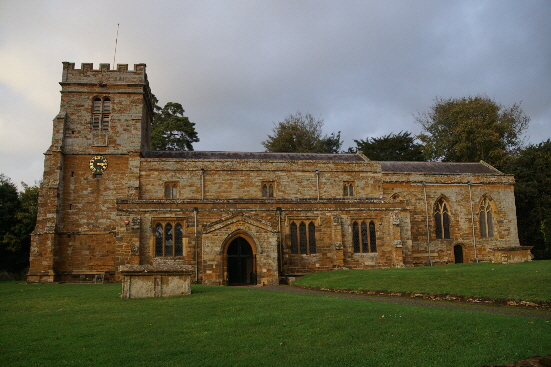 |
||||||||||||||||||||||
|
Left: The nave from the north. It has original-looking Perpendicular style windows, contrasting with the Tudor-looking windows on the clerestory and south aisle (right) |
|
|
